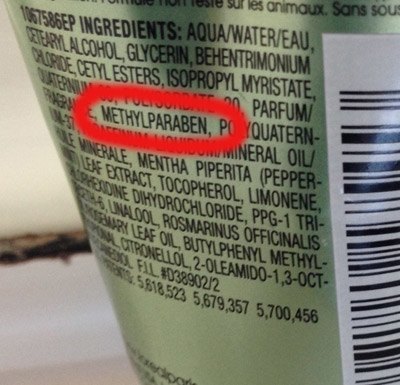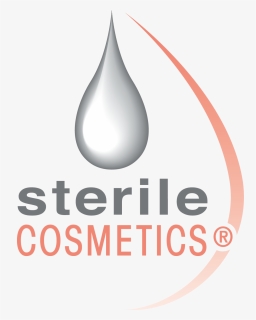We have been using parabens in cosmetics since the 1920s, but in the last 20 years, they gained a bad reputation. Today, many consider them a dangerous and unwanted ingredient. But should we be afraid of them, or are they ok to use?
What are parabens?
According to the FDA, ‘parabens are a family of related chemicals, that are commonly used as preservatives in cosmetic products’.
We use them in cosmetics to prevent the growth of mould, harmful bacteria and yeast. Basically, they give a product longer shelf life.
Chemical safety facts explains, ‘Parabens are derived from para-hydroxybenzoic acid (PHBA) that occurs naturally in many fruits and vegetables, such as cucumbers, cherries, carrots, blueberries and onions. Also, PHBA is naturally formed in the human body by the breakdown of some amino acids’.
How to recognize parabens?
You can find them under the following names:
- methylparaben
- ethylparaben
- propylparaben
- butylparaben
- isopropylparaben
- isobutylparaben
- benzylparaben

The most commonly used are the first four – methylparaben, ethylparaben, propylparaben and butylparaben.
Why are parabens getting a bad reputation?
In the last twenty years, parabens have been getting bad press. As with everything else with a bad reputation, a few studies were done, and they led the media to write sensationalistic articles. And that led people to question the safety of parabens.
One of these studies (Routledge et.al. 1998) has shown that some parabens are weakly estrogenic in rats. That means they can act like female sex hormones because they bind to estrogen receptors. As a result, they suggested that the levels of parabens humans get exposed to should be reassessed.
Another study (Darbey group, 2004.) found parabens in samples of 20 human breast cancers. Above all, methylparaben was present at the highest level. As a result, they called for ‘more detailed information to be obtained on body burdens of parabens. In particular, whether body burdens are different in cancer from those in normal tissues’.
Are parabens really dangerous?
Routledge study
In the first study mentioned above, they found that the paraben levels were 10,000 to 100,000 times less potent than the estradiol (female sex hormone). Also, it’s worth noting that they were injecting those parabens under the rats’ skin. As we don’t do that with our creams and lotions, there isn’t any immediate threat. They didn’t conclude that parabens are dangerous, but even questioning their safety was enough to cause public panic.
Darbey group study
The second study was largely discredited for a few reasons.
Firstly, they didn’t compare the cancer tissues with the non-cancerous tissue. Therefore, they couldn’t claim that cancer was caused by parabens.
Secondly, they measured the parabens in blank samples containing no tissue. And some of the blanks contained more parabens than the actual samples. That suggests that the equipment was contaminated.
As a result of receiving a lot of criticism, they issued a statement. There, they stated that there wasn’t any claim made that suggested the cancer was a result of paraben’s presence. However, this was too little, too late. They published this article 6 months after the initial study. Media already picked up on their study and caused all the commotion about the safety of parabens.
Some of the other studies were also suggesting that parabens have a direct link to cancer. But these studies were using exceptionally high dosages of parabens. And they were presenting them to animals such as rats and mice. The doses they were using were far higher than someone would actually be exposed to, even with the repeated use of such products.
In other words, there is no direct link between cancer and cosmetic products.
In conclusion, there is no proof that parabens cause cancer.
Is there an alternative?
There are a few possible options as alternatives to parabens, but they all have their downsides.
Phenoxyethanol
- it’s germicidal and germistatic
- optimum pH is between 4 and 9 (same as parabens)
- inexpensive
- they still have to prove an activity against certain bacteria, yeast and mould
Sodium Benzoate
- inexpensive
- we can easily source it from nature
- optimum pH is between 3 and 5 (not compatible with most products)
- not a broad-spectrum preservative, has to be combined with additional preservatives
Benzyl Alcohol
- we have to combine it with Dehydroacetic Acid (more effective against mould and yeast)
- optimum pH between 3 and 5 (again – not compatible with most products)
Preservative free
Preservative-free products can only survive if we pack them in airless packagings, such as an airless pump bottle. Also, the manufacturing has to be under the highest quality control systems and a sterile environment to avoid contamination. That is a costly method, so not many brands decide to go with it.


Another method to go preservative-free is to have a waterless formulation. That is hard to achieve because water is a base for most products. Also, if the product is without water, the consumer has to be careful not to introduce any water to the product. Because if they do, it will promote the growth of bacteria.
What does European Commission say about parabens
The Scientific Committee on Consumer Safety (SCCS) did confirm that Ethylparaben and Methylparaben are safe for use. Also, they are some of the most effective preservatives.
European Commission decided to limit the maximum concentration of Propylparaben and Butylparaben to 0.14% when used together or individually. They also decided to ban them from leave-on products for nappy areas of children below the age of 3. That was because their irritated skin can allow higher absorption than the intact skin.
The European Commission also decided to ban the use of Isopropylparaben, Isobutylparaben, Phenylparaben, Benzylparaben and Pentylparaben. That was due to the lack of data necessary for assessment.
None of these parabens are banned in the US.
Conclusion
It is up to every consumer to decide for themselves if they want to consume products with preservatives.
As I mentioned above, there is no direct link or proof that parabens can cause cancer. The concern is there, and that’s only because there isn’t enough data about parabens. There has to be more research about them.
The same thing goes for paraben alternatives. There are even less data about them, so maybe we are all safer with parabens.
Another option, and maybe the best option, is to avoid all the parabens except for Methylparaben and Ethylparaben, as SCCS did confirm them to be safe.
If you want to learn more about me click here.
Do you pay attention to parabens in your skincare? Do you avoid using them?